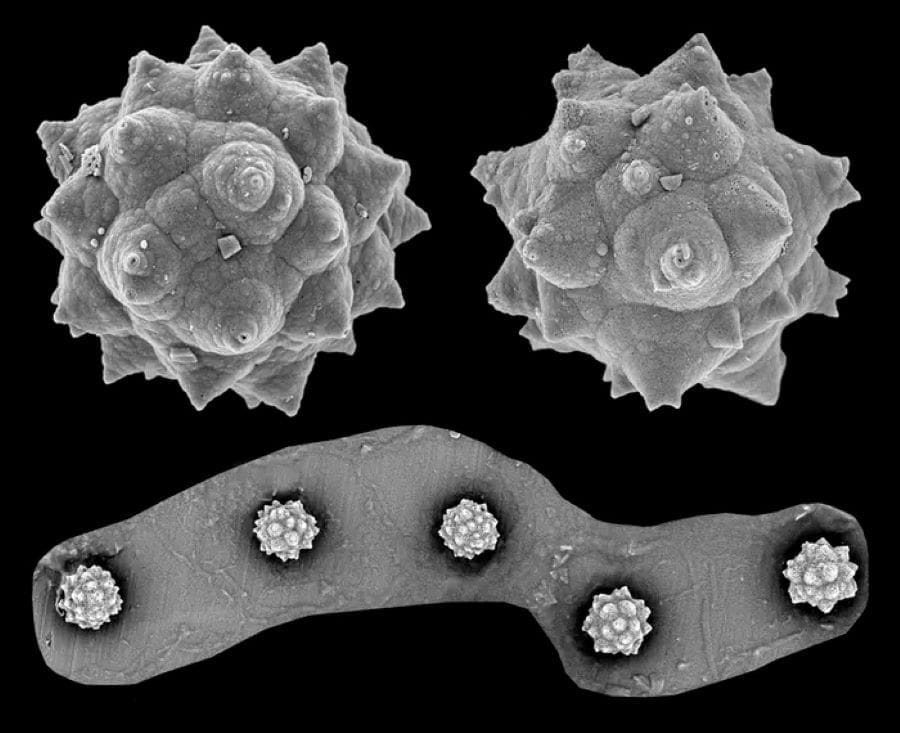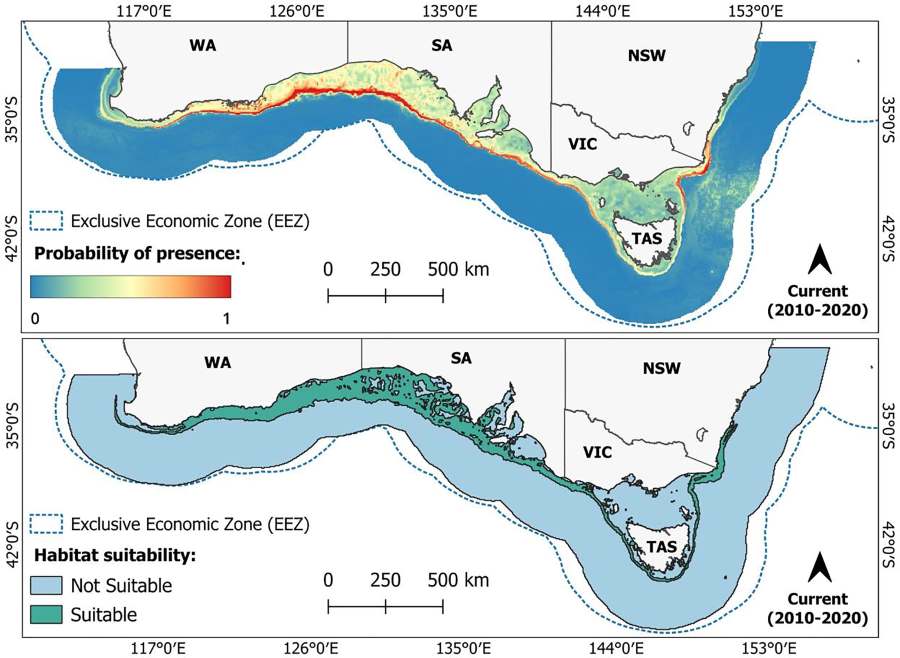Explore the latest insights from top science journals in the Muser Press daily roundup, featuring impactful research on climate change challenges.
In brief:
Study reveals palm trees once thrived in subarctic Canada
A new study by Connecticut College provides strong evidence that palm trees once thrived in subarctic Canada, reshaping scientific understanding of past Arctic climates.
Conn Professor Peter Siver’s research, published in the journal Annals of Botany, confirms that during the late early Eocene — approximately 48 million years ago — this region maintained warm temperatures year-round, even during months of winter darkness. The work was done in collaboration with colleagues from Canada and Poland.

Siver’s team identified fossilized phytoliths — microscopic silica structures formed in plant tissues — from palm trees in ancient lakebed sediments extracted from the Giraffe kimberlite pipe locality in Canada’s Northwest Territories. These fossils, alongside preserved remains of warm-water aquatic organisms, indicate a climate far warmer than previously thought, challenging assumptions about when and where ice first formed in the Northern Hemisphere.
“The discovery of palm fossils this far north provides clear evidence that the Arctic was once ice-free, with a climate similar to today’s subtropics,” said Siver. “These findings give us a window into past greenhouse conditions and help refine models predicting future climate change.”
Some of the fossil analysis for this study took place in Siver’s lab at Connecticut College, where students are involved in examining microfossils to reconstruct ancient ecosystems. His ongoing research continues to provide hands-on opportunities for students to contribute to climate science while gaining experience with advanced microscopy and fossil identification techniques.
In addition to confirming the northernmost record of palms during this time, the study also documents, for the first time, fossilized stegmata — linear arrays of phytoliths in palm foliage — establishing that this evolutionary trait had emerged by the early Eocene. The presence of multiple warm-adapted aquatic species further reinforces that this prehistoric Arctic region supported a lush, temperate ecosystem.
Siver’s research contributes to the broader understanding of Earth’s climate history, particularly the extent and timing of ice formation in the Cenozoic era. By reconstructing these past environments, scientists gain valuable insights into how ecosystems respond to long-term climate shifts.
Journal Reference:
Peter A Siver, Alberto V Reyes, Andrzej Pisera, Serhiy Buryak, Alexander P Wolfe, ‘Palm phytoliths in subarctic Canada imply ice-free winters 48 million years ago during the late early Eocene’, Annals of Botany mcaf021 (2025). DOI: 10.1093/aob/mcaf021
Article Source:
Press Release/Material by Connecticut College
A catalytic two-step: Transforming industrial CO2 into a renewable fuel
Yale scientists have taken a critical next step in creating a scalable process to remove carbon dioxide (CO2) from the air and “recirculate” it as a renewable fuel.
In a new study published in the journal Nature Nanotechnology, Yale chemist Hailiang Wang and his colleagues describe their latest breakthrough in creating methanol — a widely used liquid fuel for internal combustion and other engines — from industrial emissions of CO2, a primary greenhouse gas contributing to climate change.
The process could have far-reaching applications throughout industry.

“This is a new strategy that brings CO2 reduction into methanol to a new level,” said Wang, a professor of chemistry in Yale’s Faculty of Arts and Sciences and lead author of the new study. Wang is also a member of the Yale Energy Sciences Institute and the Yale Center for Natural Carbon Capture.
Transforming CO2 into methanol is a two-step chemical reaction. First, CO2 reacts with a catalyst to become carbon monoxide (CO). The CO then undergoes a catalytic reaction to become methanol.
The most effective previous process — also developed in Wang’s lab — featured a single catalyst made of cobalt tetraaminophthalocyanine molecules supported on carbon nanotubes.
But the two reaction steps have a mismatch on this single-site catalyst: the conversion of CO2 to CO is not as efficient or selective, which presents a challenge for scientists trying to devise a robust process that can be scaled up for industrial use.
“Having just one type of catalytic site was not optimal for both steps in the reaction,” said Jing Li, a postdoctoral associate in Wang’s lab and first author of the new study. “To avoid this trade-off, we’ve now designed a ‘two-in-one’ catalyst.”
The new process starts with a nickel tetramethoxyphthalocyanine site for the conversion of CO2 into CO. The newly formed CO then migrates onto a cobalt site — catalysis scientists refer to this as “spillover” — to complete the reduction into methanol.
“Our work offers a potentially scalable solution to reduce carbon footprints and accelerate the transition to cleaner energy,” said Conor Rooney, a former Ph.D. student in Wang’s lab and co-author of the new study.
Rooney is a founder of Oxylus Energy, a company that works with industry partners to convert carbon waste into methanol liquid fuel, based on research from the Wang lab.
Additional co-authors from Yale include Seonjeong Cheon, Yuanzuo Gao, Bo Shang, Huan Li, Longtao Ren, and Shize Yang. Yang is director of Yale’s aberration-corrected electron microscopy core facility, a comprehensive electron microscopy and spectroscopy lab focusing on materials science research.
The study is a collaboration with Quansong Zhu and Robert Baker of Ohio State University, who provided experimental evidence for CO spillover from the nickel site to the cobalt site. Other collaborators on the study include Alvin Chang and Zhenxing Feng of Oregon State University and Huan Li, Zhan Jiang, and Yongye Liang of Southern University of Science and Technology.
***
The research was funded, in part, by the Yale Center for Natural Carbon Capture and the National Science Foundation.
Journal Reference:
Li, J., Zhu, Q., Chang, A. et al., ‘Molecular-scale CO spillover on a dual-site electrocatalyst enhances methanol production from CO2 reduction’, Nature Nanotechnology (2025). DOI: 10.1038/s41565-025-01866-8
Article Source:
Press Release/Material by Jim Shelton | Yale University
‘Fog harvesting’ could yield water for drinking and agriculture in the world’s driest regions
In regions where it hardly ever rains, water is valuable, and access to it is unequal. One such place is Alto Hospicio in Chile, located in the hyper-arid Atacama Desert region. Now, researchers have tested if making water from fog could be a solution to the city’s troubled water supply. Using fog collectors, they found that up to 10 liters per square meter each day could be collected; enough to supplement water needed for drinking, irrigation, and agriculture.
With less annual rainfall than 1 mm per year, Chile’s Atacama Desert is one of the driest places in the world. The main water source of cities in the region are underground rock layers that contain water-filled pore spaces which last recharged between 17,000 and 10,000 years ago.

Now, local researchers have assessed if ‘fog harvesting,’ a method where fog water is collected and saved, is a feasible way to provide the residents of informal settlements with much needed water.
“This research represents a notable shift in the perception of fog water use — from a rural, rather small-scale solution to a practical water resource for cities,” said Dr Virginia Carter Gamberini, an assistant professor at Universidad Mayor and first co-author of the Frontiers in Environmental Science study. “Our findings demonstrate that fog can serve as a complementary urban water supply in drylands where climate change exacerbates water shortages.”
Catching moisture
Fog collectors typically consist of a mesh suspended between two posts. The mesh serves as an interception surface to catch moisture. Droplets collate on the mesh and fall into a gutter leading to water storage tanks. It’s a passive system that requires no external energy.
The researchers conducted a year-long field study in Alto Hospicio, a fast-growing municipality located in the hyper-arid Atacama Desert. Because of the city’s rapid growth, approximately 10,000 people live in informal settlements. Only 1.6% of these settlements are connected to water distribution networks and most inhabitants receive water via trucks.

“The collection and use of water, especially from non-conventional sources such as fog water, represents a key opportunity to improve the quality of life of inhabitants,” Carter said.
The researchers found that in a 100 square kilometer area surrounding Alto Hospicio, between 0.2 and 5 liters of fog water could be harvested per square meter each day. This potential, however, is confined to the higher lying altitudes outside of the city’s limits. During the study’s peak season, in August and September of 2024, collection potential reached up to 10 liters per square meter and day.
“By showcasing its potential in Alto Hospicio, one of Chile’s most stigmatized yet rapidly urbanizing cities, this study lays the groundwork for broader adoption in other water-scarce urban areas,” said Nathalie Verbrugghe, a researcher at Université libre de Bruxelles and first co-author of the article. Fog harvesting, however, should not be seen as the sole solution to water scarcity but as part of a broader urban water management strategy, the researchers said.
Easing water shortages in urban areas
The collected water could be used for drinking, irrigation of green spaces, and local food production. However, large storage systems, piping infrastructure, and ways of distribution would be necessary, the researchers said.

Based on an annual average water collection rate of 2.5 liters per square meter per day, the researchers said that 17,000 square meters of mesh could produce enough water to meet the weekly water demand (300,000 liters) for urban slums. 110 square meters could meet the annual demand for the irrigation of the city’s green spaces (100,000 liters). Similarly, fog water could be used for soil-free agriculture, with yields of 15 to 20kg of leafy green vegetables in a month.
For the same to work in other places, the geographic and atmospheric conditions need to be just right. “Key prerequisites include fog density, suitable wind patterns, and well-oriented elevated landforms. Additionally, since fog is seasonal in many regions, this variability should be considered,” said Verbrugghe. Future research will also need to evaluate the feasibility of fog harvesting in larger settlements.
“We hope to encourage policymakers to integrate this renewable source into national water strategies,” concluded Carter. “This could enhance urban resilience to climate change and rapid urbanization while improving access to clean water.”
Journal Reference:
Carter V, Verbrugghe N, Lobos-Roco F, del Río C, Albornoz F and Khan AZ, ‘Unlocking the fog: assessing fog collection potential and need as a complementary water resource in arid urban lands–the Alto Hospicio, Chile case’, Frontiers in Environmental Science 13: 1537058 (2025). DOI: 10.3389/fenvs.2025.1537058
Article Source:
Press Release/Material by Deborah Pirchner | Frontiers
Scientists call for efforts to protect habitats of critically endangered shark species
A critically endangered species of shark could be forced to adapt to new habitats – or face extinction – as a result of changes in the ocean predicted to occur as a result of climate change, a new study has suggested.
The whitefin swellshark (Cephaloscyllium albipinnum) is a species of catshark found in deeper waters just off Australia’s south and east coasts. Its precise population numbers are uncertain, but the species has been assessed by the International Union for Conservation of Nature (IUCN) as Critically Endangered for a number of years due to declines largely attributed to fishing practices.
The new study, by researchers at the University of Plymouth, suggests that degrees of ocean change – including higher sea temperatures and shifts in ocean chemistry – predicted to occur by the end of this century could heighten its vulnerability.

Using a range of computer modelling, which accounted for the species’ favoured habitats and forecast ocean conditions, researchers found that up to 70% of currently suitable habitats will be lost over the next 75 years. There is predicted to be an area within the Great Australian Bight that could offer whitefin swellshark populations refuge, with favourable ocean conditions and sources of the food they need to survive.
The only challenges with that, based on current knowledge of the species’ whereabouts, are that the sharks – which grow to around 1.1-metres long – may need to move anywhere between 70km and 1100km in order to reach their potential new home. And it is likely they will not be the only species seeking refuge in the area, with a number of other marine species also likely to be forced to migrate polewards as they look to leave areas impacted by climate change.
Writing in the journal PeerJ, the researchers say the vulnerability of the species to the future effects of climate change is clear. However, they do believe there is cause for hope, with Australia being one of the world’s more proactive nations when it comes to implementing conservation measures and management strategies, such as marine protected areas (MPAs).
The study was carried out by Kerry Brown, a BSc (Hons) Marine Biology and Oceanography graduate from the University of Plymouth, as part of her undergraduate dissertation.
She said: “Most people will probably have never seen them, but whitefin swellsharks are an incredibly pretty species. However, despite them being listed as critically endangered, we actually know very little about their behaviour given its habitats are deep in the ocean. What we do know is that they have been on our planet for a very long time, so will have had to adapt to changes in their environment before. However, the threat to their future survival now is very real unless we take urgent steps to protect them.”
Dr Robert Puschendorf, Associate Professor in Conservation Biology at the University of Plymouth, supervised the study and previously spent a decade working in Australia.
He added: “We have seen species move into different areas of the ocean in the past, so that offers some sense of hope for the whitefin swellshark. And the marine protected areas along the Australian coast are certainly a positive factor, although whether they are in the right place for this particular species is another matter. However, it does show the authorities in the region have the willingness and means to take action.
“The challenges faced by this – and other – species are now very different to what they may have encountered in the past, when you consider there are now very few parts of the planet that humans haven’t damaged in some way. But our study shows we are potentially in a position where we can do something about it.”
Journal Reference:
Brown K, Puschendorf R., ‘Future climate-driven habitat loss and range shift of the Critically Endangered whitefin swellshark (Cephaloscyllium albipinnum)’, PeerJ 13: e18787 (2025). DOI: 10.7717/peerj.18787
Article Source:
Press Release/Material by Alan Williams | University of Plymouth
Featured image credit: Gerd Altmann | Pixabay




